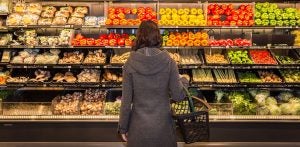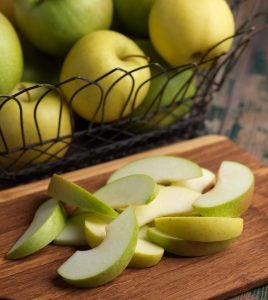You have to be tough to grow up on a farm, and that goes for all of the fruit and vegetables that live there too! Produce has to withstand environmental struggles, insect pressure, competition with weeds, and many other tests on their strength.
With the rise in use of technology and equipment on farms, produce must go through some rough handling between field and market. Factors such as this aren’t always great for the longevity of the product, so there’s value in developing fruits and vegetables that can withstand a little bit of a beating.
Some of the first efforts to develop produce that can withstand postharvest handling are done through plant breeding. Over time as technological abilities develops and equipment becomes available, we must develop the produce along with it. Plant breeding is a slow process and can take many generations of plants and various experiments to find the best traits. Unfortunately, breeding for one specific trait can have negative effects on other traits — like size, color, and importantly, taste.

All of the genes in a fruit or vegetable are connected in some way or another. This is why you may hear previous generations complain that the tomatoes tasted better “back in their day.” They aren’t entirely wrong — many people complain some commercialized fruits have become more bland over time as we tend to breed for production consistency and vitality.
Now before you get upset about missing out on the most flavorful tomato of your life, know that this direction of plant breeding was required. Without improvements in resilience, produce would experience significantly more damage on it’s way to the market. Damage — including bruising, skin breakage, and punctures — leads to decay, which in turn leads to waste. And consumers tend to bypass products that don’t look “perfect,” which further exacerbates the amount that would end up discarded.
If produce didn’t get stronger, it would be a lot more expensive due to the level of waste created.
Another way we can develop stronger produce is by utilizing gene editing. Genetically modified organisms, or GMOs, can allow scientists to get a strong fruit, that still tastes great. Since gene editing only changes the genes you are manually editing, we can leave other genes, like those for best flavor, in place. We can make fruits and vegetables that can withstand the insects and competition in the field, the mechanical harvesting, washing, and packaging, and still be perfect for the end consumer.

A couple of examples of fruits that have benefited from gene editing include:
- Innate Potato: These potato varieties are resistant to black spot and bruising (40 percent less bruising!) in addition to reducing negative chemicals like acrylamide that form when cooking potatoes. Genetic gains in potatoes via breeding can take over two decades, whereas gene editing can take less than five years once the genes are identified.
- Arctic Apples: Arctic apples were designed as slicing apples. Have you ever cut up an apple and the slices turn brown within the hour? Arctic Apples were gene edited to prevent/delay browning of the inner flesh, which makes them the perfect slicing apple.
There are other more common GMOs that you may be familiar with, like corn, soybean, canola, or sugar beets, but these were generally edited to reduce production related stress. These species are developed to be herbicide tolerant, drought tolerant, or insect and disease resistant. Gene editing and the resulting GMOs are a scientific advancement that significantly improves our food system and should be used more frequently! We must continue to educate and advocate for their scientific use to propel consumer and political acceptance forward.
Michelle Miller, the “Farm Babe,” is an internationally recognized keynote speaker, writer, and social media influencer and travels full time to advocate for agriculture. She comes from an Iowa-based row crop and livestock farming background and now resides on a timber farm in North Central Florida.



